With the infrequency of my posting, you might have been wondering what we are up to. Having made our way through studying the invertebrate section of the taxonomy (with a unit on protists/protozoa and microbiology, which I might go backwards in time and post some pictures of later), and with colder weather finally settling in, we took a break from our life sciences studies and filled the classroom with some physical sciences lessons about simple machines.
Our simple machines unit is an inquiry-based approach to teaching preschool aged children to identify tools and simple machines- specifically screws, wheels, inclined planes, wedges, pulleys, and levers. It also provides them with an age-appropriate introduction to the disciplines of engineering, physics, and applied mathematics to encourage children’s interest in these areas.
Think this sounds too lofty for children aged 2-6? Think again. Every time I bring these materials out into the classroom I amazed at the quality of their observations and inquiries; children certainly do have mathematical, scientific minds.
Each of the six simple machines is presented to the child through four differing modalities:
1) Through age-appropriate literature, the children learn the form, functions, parts, and historical uses of each type of machine. Teaching children the correct nomenclature for things in their environment also helps them to acquire a rich and varied volcabulary.
2) Through practical life lessons (using a hand mixer, using a nutcracker, using a screwdriver, using a hammer) they come to understand the ubiquity of simple machines in their everyday environment, and learn to able to identify them according to type. They also learn that engineering/technology represents a designed solution created in response to practical problems that are solved by applying scientific principles to them.
3) Then, our young renaissance scientists interact and perform experiments, with working models of simple machines. They replicate some classic experiments and inventions, gain exposure to the scientific method, and manipulate materials that enhance their three dimensional visualization skills and their understanding of the position and motion of objects (they ways in which objects move, the ways in which applying a force changes the motion of an object, and that under some conditions an object can be balanced).
The shelves are literally brimming with simple machines experiments and models. These materials certainly call to children of all ages.
Our young scientists have been busy performing simple experiments with wedges, and investigating the ways in which they make it easier to separate objects using mechanical force and to hold objects in place.
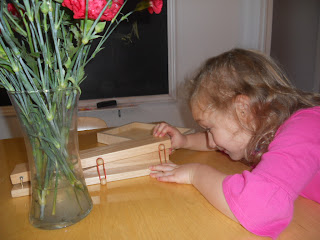

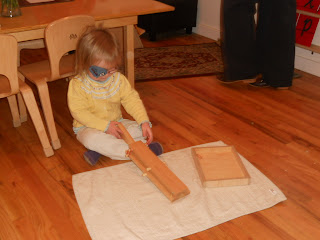
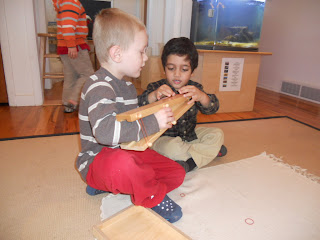
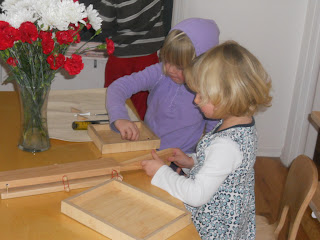
They have been experimenting with wheels and axles, cranks, and gears. They have been learning how gears transfer rotational torque and performing simple experiments to determine that the relative motion of a gear is precisely fixed and that gears with smaller radii rotate more frequently but provide less torque. This is one of my favorite experiments to do with the older children; nevertheless, I was particularly pleased when an older student who had been working with the chains applied her knowledge to a gear lesson and arrived at an understanding of proportion (if the smaller gear rotates seven times every time the larger gear rotates once, then the smaller gears will rotate fourteen times if the larger gear rotates twice). Nice! I’m sure it has nothing to do with the fact that her mother is (literally!) a rocket scientist.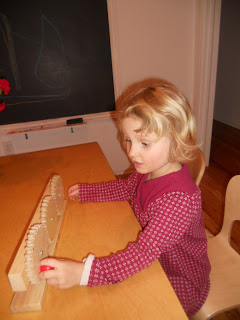
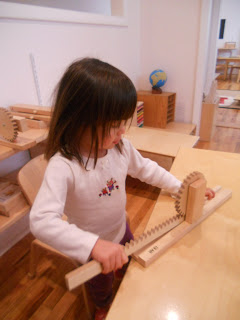


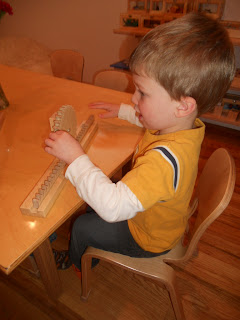
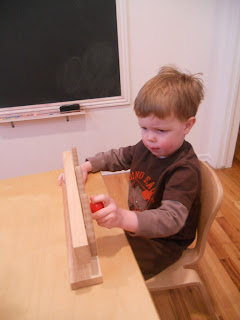
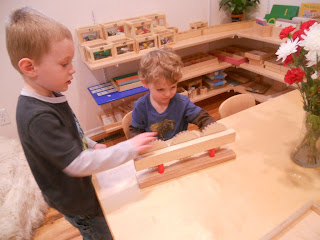

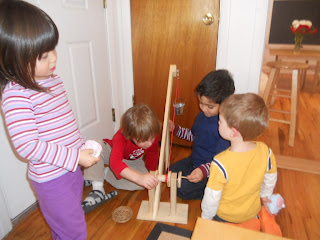
 The children have also been using models of inclined planes to understand how an inclined plane functions (that the sloped surface reduces the force necessary to move an object, but at the expense of increasing the distance over which the force is applied).
The children have also been using models of inclined planes to understand how an inclined plane functions (that the sloped surface reduces the force necessary to move an object, but at the expense of increasing the distance over which the force is applied).
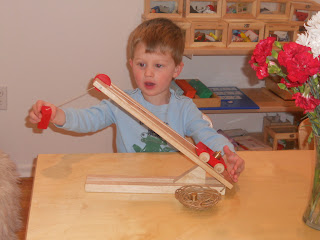
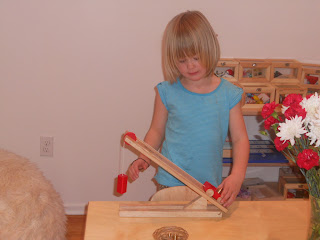
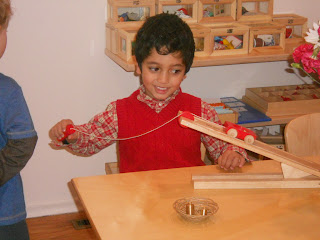
 And, they have used architectural blocks to understand and appreciate the uses of simple machines, and their application in the construction of of architectural marvels. These are some of my favorite lessons in the classroom because of the way in which they really take advantage of the mixed age group (with the older children delighting in being able to assist the younger children in building the complex models).
And, they have used architectural blocks to understand and appreciate the uses of simple machines, and their application in the construction of of architectural marvels. These are some of my favorite lessons in the classroom because of the way in which they really take advantage of the mixed age group (with the older children delighting in being able to assist the younger children in building the complex models).
They have been experimenting with wheels and axles, cranks, and gears. They have been learning how gears transfer rotational torque and performing simple experiments to determine that the relative motion of a gear is precisely fixed and that gears with smaller radii rotate more frequently but provide less torque. This is one of my favorite experiments to do with the older children; nevertheless, I was particularly pleased when an older student who had been working with the chains applied her knowledge to a gear lesson and arrived at an understanding of proportion (if the smaller gear rotates seven times every time the larger gear rotates once, then the smaller gears will rotate fourteen times if the larger gear rotates twice). Nice! I’m sure it has nothing to do with the fact that her mother is (literally!) a rocket scientist.
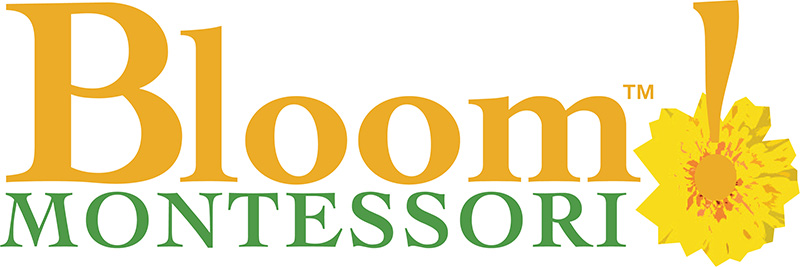
Have we mentioned how much we love Bloom! recently?! These are such cool lessons and fun for the kids too! Suzan and Ken Green
Thank you so much! We sure love to have both of them! They always amaze me with their insights- it really is amazing what children this age are capable of grasping spontaneously through their own mental efforts! I find myself simultaneously feeling so proud and amazed!
Hello Abigail, can you please share where you purchased these and your other materials? Maybe a review post. It would be really appreciated!
This is a great post! I have noticed what a little scientist/physicist my two year old is and have created levers and boards to balance things, but these are great! I would also love to know where you bought these. I have my eye on a wonderful scale from Plan Toys but try to make things myself too…